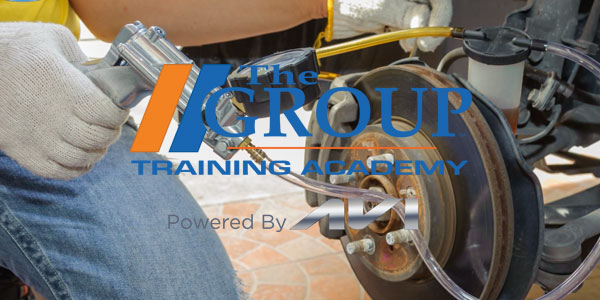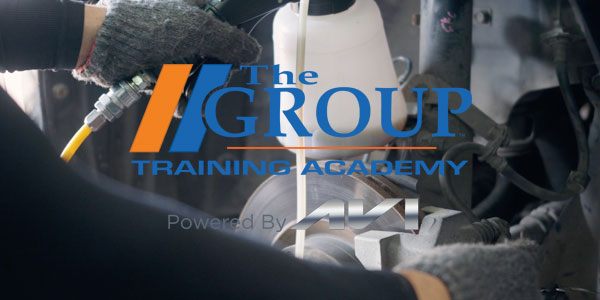Sample Review Questions:
1. Brake rotors should be replaced:
a. If cracked
b. If worn below minimum thickness or discard specifications
c. If they have hard spots
d. All of the above
2. If the brake pedal slowly sinks to the floor when stopped at a traffic light, which of the following probably needs to be replaced.
a. Calipers
b. Wheel cylinders
c. Master cylinder
d. Brake pads
3. What type of brake fluid is most commonly used in domestic passenger cars?
a. DOT 3
b. DOT 4
c. DOT 5
d. All of the above
4. A brake proportioning valve:
a. Reduces brake pressure to the rear wheels
b. Reduces brake pressure to the front wheels
c. Is part of the antilock brake system
d. Is used only in light trucks and vans
ANSWER KEY
1D, 2C, 3A, 4A
EXPLANATIONS:
1. Brake rotors must be relatively smooth, flat and free from defects. Hard spots and variations in thickness can cause uneven wear that can cause pedal vibration when braking.
Rotors should be resurfaced when pads are replaced if the rotors are rough, heavily grooved or uneven. Replacement is required if the rotors have cracks (other than minor surface heat cracks) or are severely corroded.
Rotors also have wear limits. Rotor thickness should always be measured with a micrometer. If the rotor is worn down to the minimum thickness specification (which is usually marked on the rotor), or it cannot be resurfaced without exceeding the minimum “machine to” specification, the rotor must be replaced.
2. The master cylinder creates hydraulic pressure when the brake pedal is depressed. Inside are two pistons that share a common shaft but push fluid through two separate hydraulic circuits. This provides fail-safe redundancy in case one of the hydraulic circuits fails. Wear in the master cylinder bore and/or worn piston seals can allow the brake pedal to slowly sink to the floor when the pedal is held under pressure. A worn master cylinder must be rebuilt or replaced.
3. Brake fluid must meet certain Department of Transportation (DOT) temperature requirements. Many fluids exceed these requirements.
DOT 3 “Heavy-Duty” brake fluid is glycol-based and has a minimum dry boiling point of 401 degrees F., and a wet (moisture contaminated) boiling point of no less than 284 degrees F. The fluid must also meet specific viscosity, appearance (clear to amber), fluid stability, anticorrosion, rubber compatibility, evaporation and resistance to oxidation requirements. DOT 3 fluid is most common type used in passenger cars. DOT 4 brake fluid is also glycol-based but has a higher temperature rating. DOT 4 may be specified for some performance vehicles, import cars or light trucks where higher brake temperatures may be encountered. DOT 4 fluids have a minimum dry boiling point of 446 degrees F. and a minimum wet boiling point of 311 degrees F.
DOT 5 brake fluid is silicone-based, and has a minimum dry boiling point of 500 degrees F. and a wet boiling point of 356 degrees F. Unlike DOT 3 and 4 fluids, DOT 5 fluid does not absorb or dissipate moisture. But it tends to aerate when cycled rapidly, and is not recommended for vehicles that have antilock brakes.
4. The proportioning valve reduces hydraulic pressure to the rear brakes to maintain proper brake balance. This is necessary to keep the lightly loaded rear brakes from locking up when braking hard. The valve is usually located on or near the master cylinder. Some vehicles (trucks and minivans) often have a “load sensing” proportioning valve attached to the rear suspension to increase brake pressure to the rear brakes according to load.
Sections covered:











